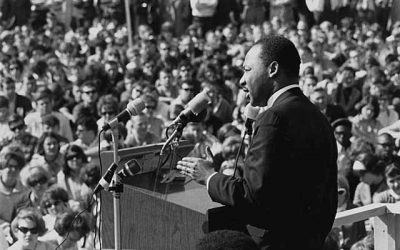Burt Rutan may be famous for coming up with the ideas for his aircraft literally on paper napkins, but he meticulously assigns them a number. Hence the tiny plaque on SpaceShipOne, lost among the sponsors’ logos, which after interpretation reads “Mark 314, Serial Number 1.” The first privately funded spacecraft in human history was what its designer considered to be his 314th unique idea! And the serial number of the prize winning engine was SD-013, for SpaceDev 13. No idiotic concerns about numerology here, despite the hurdles between the terra firma of Mojave, CA and 328,000 feet above it.
When SpaceShipOne broke a landing gear early in its flight test program, Rutan merely had it redesigned. When Mike Melvill did 29 barrel rolls at 200,000 feet near the end of engine burnout last Wednesday, he first “feathered” the wing for re-entry before manually nulling the roll rate. At 150 degrees per second, such a roll rate appears frightening. But outside the atmosphere it presents no structural hazard to the airframe.The T-38, a staple trainer for throttle jockeys, routinely sustains structural loads associated with 720 degrees per second well within the atmosphere.
Burt Rutan echoed the sentiments of bloggers who took down Dan Rather when he said, “The big guys, the Boeings, the Lockheeds and the nay-saying people at Houston, they probably, based on stuff that’s been out, probably think that we’re a bunch of homebuilders that put a rocket in a long EZ. (One of Rutan’s early kit plane designs.) I think they are looking at each other now and saying, ‘We’re screwed.'”
Burt Rutan has an almost supernatural knack for picking anniversaries.
SpaceShipOne became the first privately funded aircraft to break the sound barrier on December 17, 2003–the centennial of the Wright Brothers’ first flight at Kill Devil Hill. The Smithsonian was unable to recreate the Wright’s achievement in front of a host of luminaries which included President Bush. They failed to understand that the Wrights flew strictly on their own terms. The Wrights even grounded a 1909 flight with the full US Senate in attendance because the weather was not to their satisfaction.
October 4, 2004 was meant to mark the anniversary of Sputnik and a re-assertion of the efficacy of capitalism. But NASA would intervene in its usual fashion. It issued an accident report, in a press release clearly timed to hide its failure.
The weather satellite NOAA N-Prime came to an early demise a year ago, but not in space. This expensive behemoth fell to the factory floor because factory technicians failed to assure that it was securely bolted in place before tilting it. A year later, in a report dated September 13, 2004 NASA cites the usual blather as causes here:
http://www.spaceref.com/news/viewpr.html?pid=15189
Unbolted. Screwed. NASA. Turn the page.



